This post may contain affiliate links. Please read our disclosure policy.
Try this delicious Peranakan or Nyonya style chap chye made with a mixture of vegetables along with other flavorful ingredients all cooked in one pot or wok! Both vegetarian and non-vegetarian versions are included.
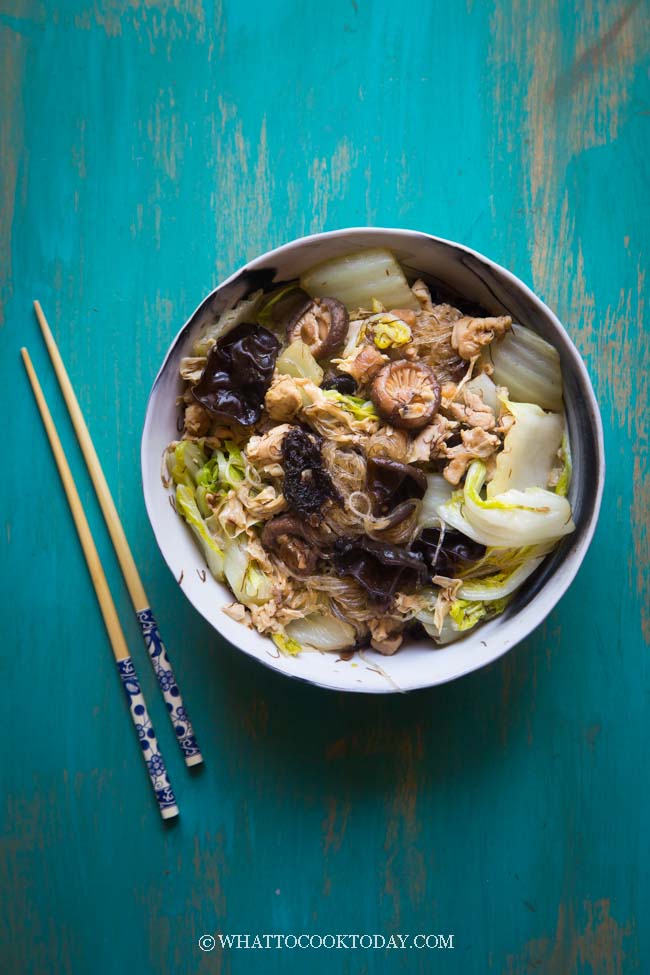
WHAT IS CHAP CHYE
I grew up in Medan, one of the cities on the island of Sumatra, Indonesia and we have our version of chap chye or we call it cap chai in Hokkien. Cap or chap means a mixture of everything (kinda like what gado gado means). Chye or chai means vegetables in general. So it is a mixed vegetable dish.
This version I’m sharing here is Nyonya or Peranakan chap chye, which is commonly found in Singapore and Malaysia. Nyonya chap chye is also a dish commonly made to welcome the Chinese Lunar New Year.
BASIC NYONYA CHAP CHYE
I’m not of Peranakan descent, and I shouldn’t say that this is 100% authentic, but I love Nyonya food and this is one of my favorites. It is easy to make and my two kiddos love it too. You are welcome to add or take out anything you don’t have or use whatever you have. That’s the whole idea of chap chye. Nyonya chap chye is usually prepared as a vegetarian dish, but I do include some meat and other non-vegetarian ingredients. Please feel free to omit those for vegetarian versions. Here’s what I included in my basic Nyonya chap chye:
1. Vegetables
Napa cabbage (this is the base of Nyonya chap chye, so I feel like it’s a must to have)
2. Mushrooms and fungi
I used dried shitake mushrooms and black fungus/wood ear mushrooms (bok nee)
3. Protein
Chicken, dried beancurd sheets
4. Aromatics
Dried shrimp, garlic
5. Carbs
Mungbean thread noodles (tang hoon)
6. Seasonings
Tau cheo (fermented bean paste), dark soy sauce, sesame oil, sugar, soy sauce
7. Fat Choi/Fat choy (Hair vegetables/Dried black moss)
HOW TO COOK NYONYA CHAP CHYE
1. SOAK SOME INGREDIENTS IN WATER
Soak the mushrooms and wood ear mushrooms in about 500 ml of hot water until soft and plump, about 30 minutes or longer. You can leave them whole or cut into slices.
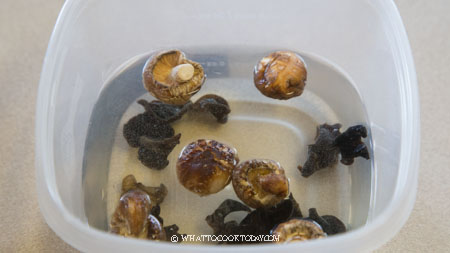
For non-vegetarian: Soak dried shrimp in warm water until it’s softened and then discard water and chop into fine pieces.
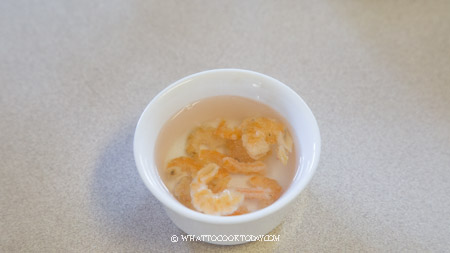
Soak the bean curd sheets in water until softened and cut into bite-size pieces.

Soak the noodles in cold water until softened and discard the water.
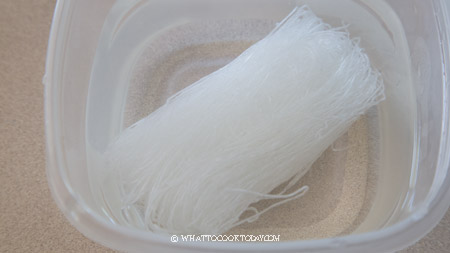
2. COOKING
Preheat a large skillet or wok over high heat. Add cooking oil. Stir fry garlic for about 5-6 seconds.

Add the dried shrimp and continue to stir fry for another minute.
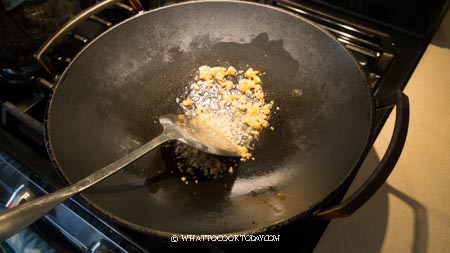
Add the meat and stir fry until they turn color.
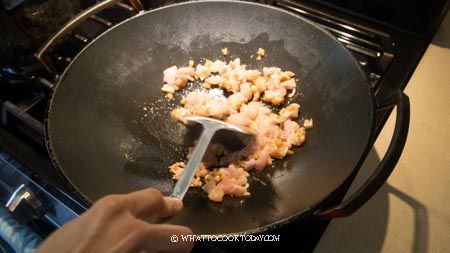
Add the mushrooms, fungi, beancurd sheets, napa cabbage, and seasonings. Stir to mix everything.
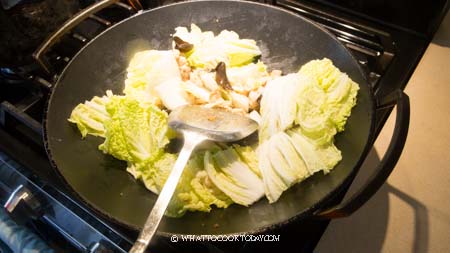
Add the liquid.
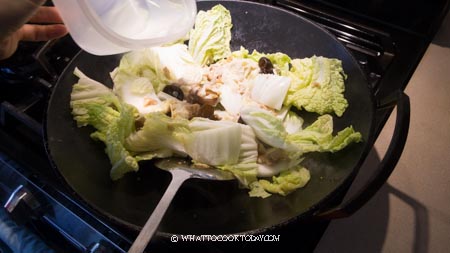
Bring to a boil and cover with a lid and lower the heat to let it slowly braise for about 30-40 minutes.

After that, uncover the lid and have a taste. Add more salt and/or sugar to suit your taste.

Add the pre-soaked mungbean thread noodles and fat choi and stir to mix everything. Noodles and fat choi should be softened.

Turn off the heat and transfer to a large serving platter and serve immediately.

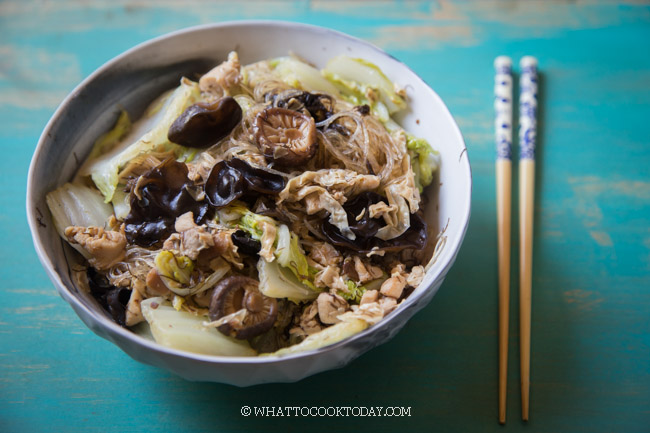
POSSIBLE VARIATIONS
Vegetables: cabbage, carrots, or any vegetables suitable for braising
Protein: pork belly, extra-firm tofu
Fungus: dried lily bulb (kim ciam)
Aromatics: Fermented red bean curd

DID YOU COOK THIS NYONYA CHAP CHYE RECIPE?
I love it when you guys snap a photo and tag to show me what you’ve made 🙂 Simply tag me @WhatToCookToday #WhatToCookToday on Instagram and I’ll be sure to stop by and take a peek for real!
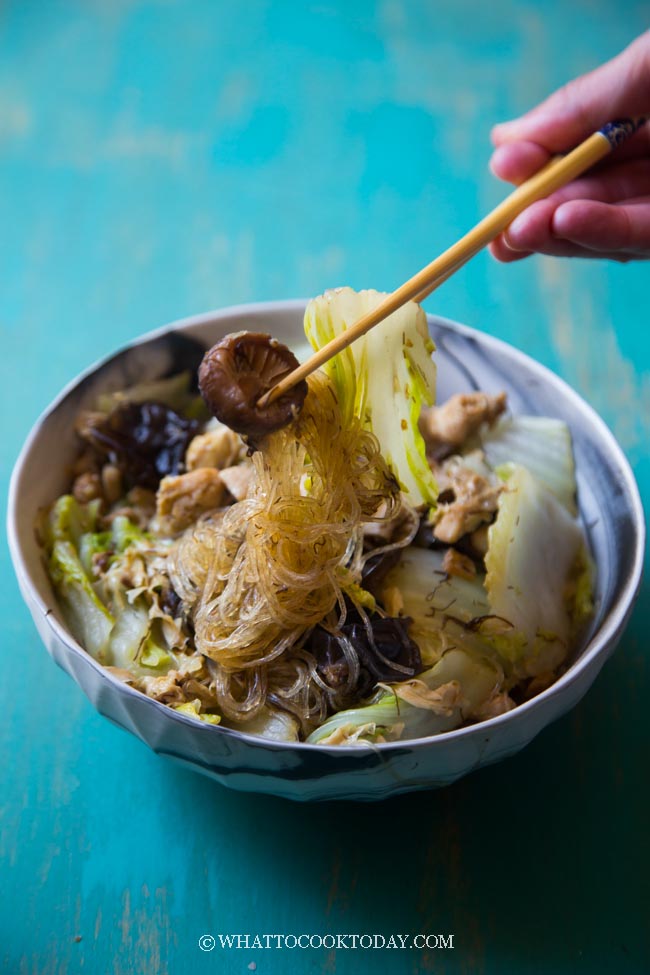
Nyonya Chap Chye (Braised Mixed Vegetable Stew)
Ingredients
- 500 gr Napa cabbage cut into large chunks
- 20 gr wood ear mushrooms
- 30 gr shiitake mushrooms
- 50 gr dried beancurd sheets (tau kee)
- 3 Tbsp cooking oil
- 100 gr mungbean thread noodles
- 5 gr fat choi
You can omit these for vegetarian version:
- 4 cloves garlic finely minced
- 20 gr dried shrimp
- 100 gr boneless skinless chicken thighs you can also use chicken breast or pork belly, diced or thinly sliced
Seasonings:
- 1 Tbsp fermented bean paste (tau cheo)
- 2 tsp dark soy sauce
- 1 Tbsp oyster sauce use vegetarian oyster sauce for vegan version
- ½ tsp sugar
- 1 tsp sesame oil
Instructions
- Mix all the seasonings ingredients in a bowl and set aside
For vegetarian version:
- Soak the mushrooms in about 500 ml of hot water until soft and plump, about 30 minutes or longer. You can leave them whole or cut into slices. Soak the wood ear mushrooms in water until they double or triple in size, cut into slices
- Soak the noodles in cold water until softened and discard the water
- Preheat a large skillet or wok over high heat. Add cooking oil. Stir fry mushrooms, fungi, beancurd sheets, napa cabbage, and seasonings. Stir to mix everything. Add the liquid and bring to a boil and cover with a lid and lower the heat to let it slowly braise for about 30-40 minutes
- After that, uncover the lid and have a taste. Add more salt and/or sugar to suit your taste. Add the pre-soaked mungbean thread noodles and fat choi and stir to mix everything. Noodles and fat choi should be softened. Turn off the heat and transfer to a large serving platter and serve immediately
For non-vegetarian version:
- Soak dried shrimp in warm water until it's softened if using. Then discard water and chop into fine pieces. Soak the bean curd sheets in water until softened and cut into bite-size pieces
- Soak the noodles in cold water until softened and discard the water
- Preheat a large skillet or wok over high heat. Add cooking oil. Stir fry garlic for about 5-6 seconds, add the dried shrimp and continue to stir fry for another minute. Add the meat and stir fry until they turn color. Add the mushrooms, fungi, beancurd sheets, napa cabbage, and seasonings. Stir to mix everything. Add the liquid and bring to a boil and cover with a lid and lower the heat to let it slowly braise for about 30-40 minutes
- After that, uncover the lid and have a taste. Add more salt and/or sugar to suit your taste. Add the pre-soaked mungbean thread noodles and fat choi and stir to mix everything. Noodles and fat choi should be softened.
- Turn off the heat and transfer to a large serving platter and serve immediately
RECOMMEDED TOOLS
You may also like this Indonesian cap chay/ cap chai
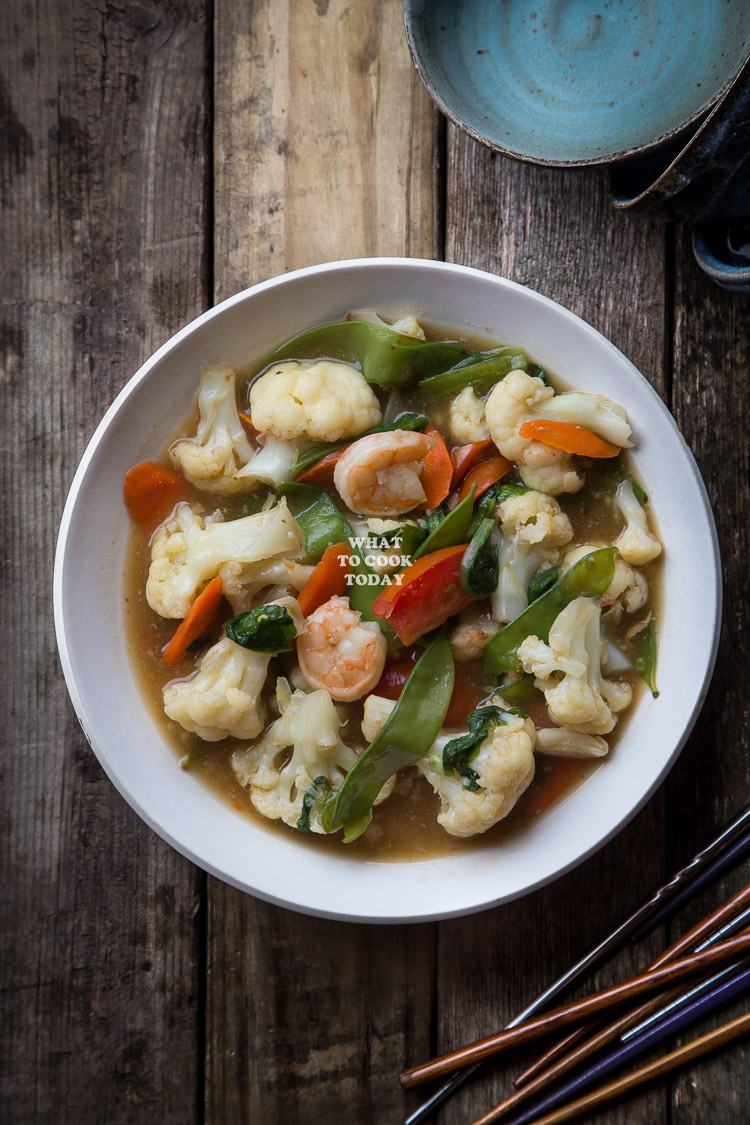



2 comments
Is this a side dish, or can it be a main?
Hi Annabel, this is usually served as a side dish.